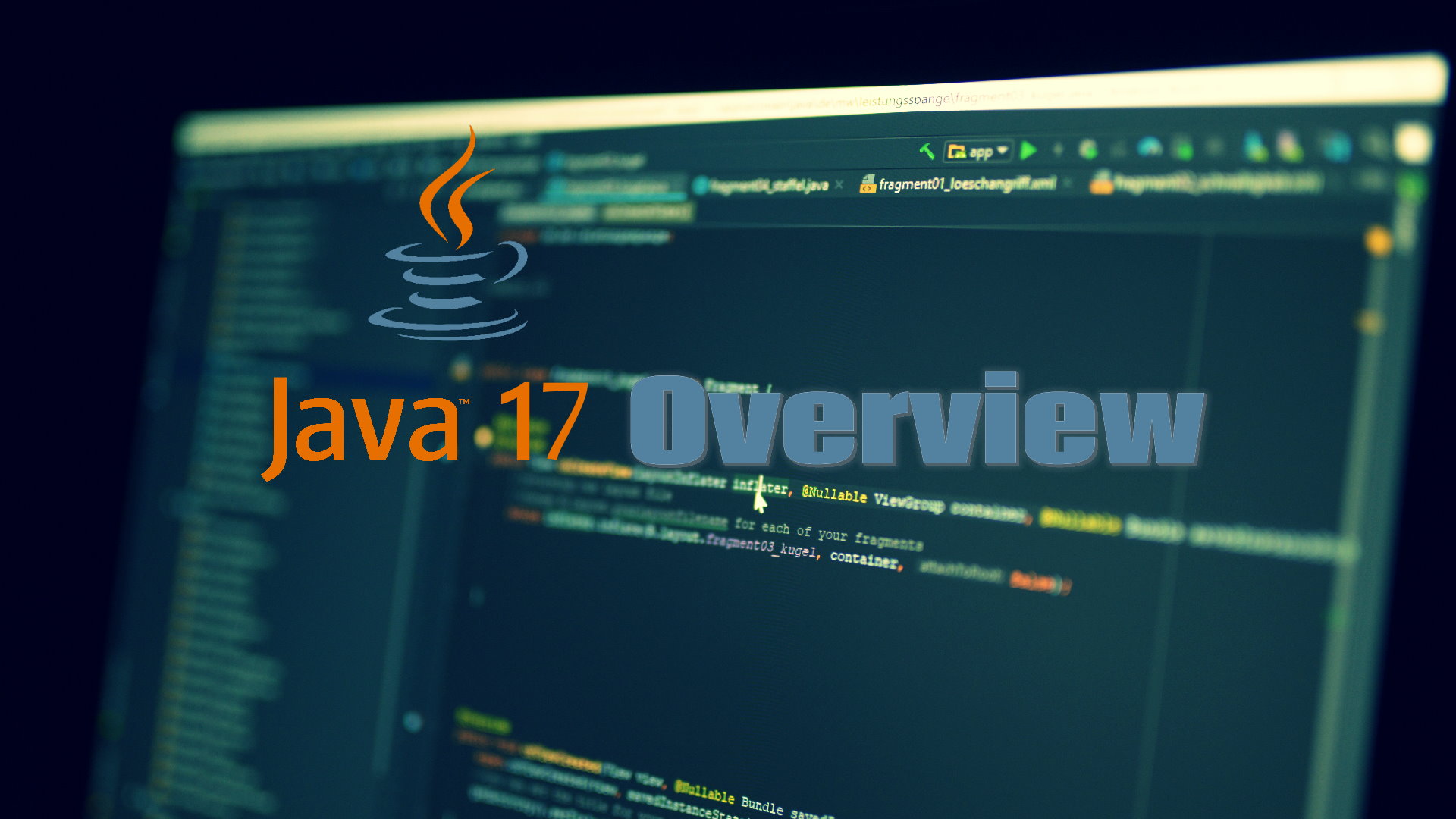Getting Started With Java 17

JDK 17, the open-source reference implementation of Java SE Platform version 17, was released on 14 September 2021.
It will be considered a long-term support (LTS) release from most vendors, the previous version having this kind of support being JDK 11. You can overview the key features and changes from Java 8 to Java 11 in the following article.
Production-ready builds of JDK 17 can be downloaded from the following sources:
Eclipse Temurin (Eclipse Adoptium project, the continuation of the AdoptOpenJDK project): Provides prebuilt OpenJDK binaries using an open source build & test infrastructure, for more than 7 platforms (such as Linux, Windows, macOS, and Docker).
Azul Zulu: provides community as well as enhanced and certified builds of OpenJDK for a wide array of platforms.
Oracle JDK: Commercial Oracle branded builds of the JDK. Free for development use, and in special cases in production under the Oracle No-Fee Terms and Conditions License.
Pattern Matching for instanceof
// The following code in JDK 11:
if (obj instanceof Double) {
Double d = (Double) obj;
System.out.println(d.intValue());
}
// can be expressed in JDK 17 as:
if (obj instanceof Double d) {
System.out.println(d.intValue());
}Records
// The following code in JDK 11:
public final class Point {
private final int x;
private final int y;
public Point(int x, int y) {
this.x = x;
this.y = y;
}
public int getX() {
return x;
}
public int getY() {
return y;
}
@Override
public boolean equals(Object o) {
if (this == o) return true;
if (o == null || getClass() != o.getClass()) return false;
Point point = (Point) o;
return x == point.x && y == point.y;
}
@Override
public int hashCode() {
return Objects.hash(x, y);
}
@Override
public String toString() {
return "Point{" + "x=" + x + ", y=" + y + '}';
}
}
// can be expressed in JDK 17 as:
record Point(int x, int y) { }Sealed Classes
Sealed classes and interfaces restrict which other classes or interfaces may extend or implement them.
public abstract sealed class Shape permits Circle, Triangle, Rectangle { ... }Switch Expressions
Added a new switch label form case L -> that allows multiple values per case and does not fall through to the following cases (without needing a break statement)
switch (day) {
case MONDAY, TUESDAY, WEDNESDAY, THURSDAY, FRIDAY -> System.out.println("weekday");
case SATURDAY, SUNDAY -> System.out.println("weekend");
}Switch expressions and yielding values:
int daysOfMonth = switch (month) {
case 2 -> {
if (isLeapYear(year)) {
yield 29;
} else {
yield 28;
}
}
case 4, 6, 9, 11 -> 30;
default -> 31;
};Text Blocks
String html = """
<html>
<body>
<p>Hello, world</p>
</body>
</html>
""";Edwards-Curve Digital Signature Algorithm (EdDSA)
import java.nio.charset.StandardCharsets;
import java.security.*;
// ...
byte[] bytesToBeSigned = "my data".getBytes(StandardCharsets.UTF_8);
// Generate a public and private key pair using the Ed25519 instantiation of the EdDSA algorithm
KeyPairGenerator keyPairGenerator = KeyPairGenerator.getInstance("Ed25519");
KeyPair keyPair = keyPairGenerator.generateKeyPair();
// Signature using the private key
Signature signature = Signature.getInstance("Ed25519");
signature.initSign(keyPair.getPrivate());
signature.update(bytesToBeSigned);
byte[] signatureBytes = signature.sign();Hidden Classes
A hidden class is created by invoking Lookup::defineHiddenClass.
import java.lang.invoke.MethodHandles;
import java.lang.invoke.MethodHandles.Lookup.ClassOption;
// ...
MethodHandles.privateLookupIn(myClass, MethodHandles.lookup())
.defineHiddenClass(bytes, false, ClassOption.NESTMATE, ClassOption.STRONG);JVM Constants API
The java.lang.constant package provides nominal descriptors for runtime and classfile entities such as classes and method handles.
JVM, internals and removals
Maven
The maven-compiler-plugin support Java 17 compilation using the following configuration in the pom.xml:
<properties
<maven.compiler.source>17</maven.compiler.source>
<maven.compiler.target>17</maven.compiler.target>
<!-- ... -->
</properties>or
<build>
<!-- ... -->
<plugins>
<plugin>
<groupId>org.apache.maven.plugins</groupId>
<artifactId>maven-compiler-plugin</artifactId>
<version>3.8.1</version>
<configuration>
<source>17</source>
<target>17</target>
</configuration>
</plugin>
</plugins>
</build>Gradle
Gradle supports Java 17 starting from the 7.3 version.
If you are using an earlier version of Gradle, you can build your Java 17 project by using toolchains in your build.gradle:
java {
toolchain {
languageVersion = JavaLanguageVersion.of(17)
}
}IntelliJ IDEA
IntelliJ IDEA added basic support for Java 17 starting from the 2021.2.1 version. The latest version can be downloaded from this link.
Eclipse
Full support to Java 17 was added to Eclipse starting from the 4.22.0 release. The latest version can be downloaded from this link.